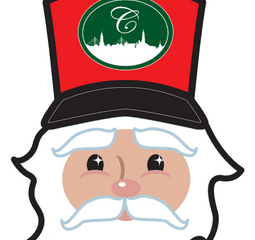Uncategorized
Everything To Know About Near To PHP Currencies
People in the Philippines use the Philippine Peso as their primary currency, and the ISO code for the money is PHP, which is also its name. The central bank mints and makes banknotes and coins at the Bangko Sentral ng Pilipinas (BSP) in Quezon City. People looking to convert Near to php are going to find this guide extremely helpful.
PHP is also called “Piso” in the Filipino language. They used English because it was a colony of the United States. As a result, the term “peso” was on the money until 1967. The word “Piso” became popular when the Filipino language was added to banknotes and coins.
- People in the Philippines use the Philippine Peso as their primary currency, and the ISO code for the money is PHP, which is also its name.
- The word “Piso” became popular after the Filipino language was used on banknotes and coins.
- The new currency designs feature well-known Filipinos and beautiful natural landscapes.
The History Of The Philippine Peso
When the government used its money to make coins and paper money of its currency in 1898, it changed. The change, however, was short-lived because the currency was no longer used in 1901. The United States toDollar (USD). There was a peg in place until 1946 when the country became independent.
The Philippine Central Bank was set up in 1949. In the 1950s, it tried to keep the US dollar and the Philippine peso at a 2:1ok over the Philippines and made gold-backed money worth about half as much as the US exchange rate. Pesos were traded illegally when the illegal market for them grew so big that it was impossible to keep up with it.
Near Money Vs PHP
As far back as 1967, Filipino was used as a language in the bank’s currency. In 1969, a new set of banknotes came out with different amounts of money. They were in the parts of one peso, five pesos, and so on. In 1973, the Ang Bagong Lipunan (ABL) Series of banknotes were first made public. Most pesos were in the range of 2 to 100 pesos, and the lowest was 2 pesos. Afterward, the New Design Series came out, a new line.
As soon as the central bank put out the New Design Series, it was a significant change. In 1987, the first 500 PHP notes were made, and the first 1,000 were made in 1991. In 2002, the first 200 PHP notes were made. They were called the “New Design Series” in the Philippines, and they were made between 1985 and 1993. In 1993, the BSP was reformed. After that, it was changed to the BSP series. The New Generation Currency Series, which came out in December 2010, replaced the old money series.
The most recent banknotes were made until 2013 and were legal tender until December 31, 2015. The bills were supposed to be demonetized on January 1, 2017, but the deadline for exchanging old notes twice was extended to exchange old money for new money. The first was June 30, 2017; the second was December 29, 2017.
Convert Near to PHP
In 2009, the BSP said that current notes and coins would be completely changed to make them more secure and last longer. The new banknotes show well-known Filipinos and beautiful nature. As soon as December 2010, the BSP began to sell new notes.
One hundred peso bills with a better purple or purple color were given out in February 2016. People said that the 100-peso and 1000-peso banknotes should be separate. A lot of the 100 PHP bills from the New Generation Currency are still in use and can be used by everyone.
There will be a new 20-PHP coin instead of a note. The BSP said that on December 11, 2019. The switch from banknotes to coins would be done by the end of 2021 or the beginning of 2022. New Generation Currency’s 5-peso cash is getting a makeover from the BSP. Under the new idea, bumps must be on both sides of the coin.
One, five, ten, and twenty peso coins are now in use, as well as one, five, ten, and twenty cents. It isn’t just coins and bills that are in use. There are also banknotes in 20, 50, 100, 200, 500, and 1,000 pesos. To know more about these currencies, https://alligat0r.com/blog/safemoon-price-prediction/.
























